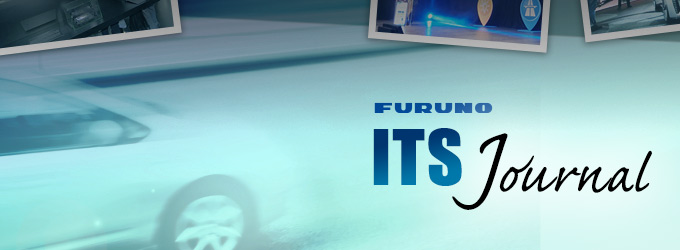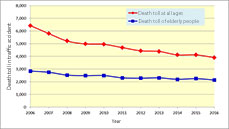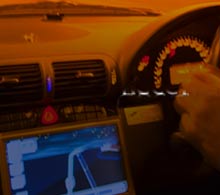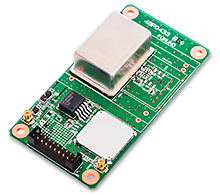Articles for ITS market The movement toward accident countermeasures for aging drivers in Japan
Elderly driver accidents are not following the decreasing trend in Japan
Traffic accidents by elderly drivers are not reducing at the overall national rate. Many cases have occurred including driving the wrong way on highways, driving on sidewalks during heavy traffic periods, and speeding in convenience store parking lots. Drivers are not only in their 70’s and 80’s, but also 60’s, which means many elderly drivers are still causing serious traffic violations and accidents.
In response to these incidents and various accident types, televisions, newspapers and internet sites have been covering and reporting these as an "elderly driver problem" Looking from strictly a social economic situation, many people think that traffic accidents have increased recently. However traffic accidents have continued to decline in recent years. According to the announcement by the National Police Agency, the peak of traffic accident numbers were 952,720 in 2004. In 2016 the accident numbers have drastically decreased to 499,232 or by nearly half.
Along with this, the number of deaths due to traffic accidents has also decreased. In 2016 there were 3,904 deaths, which is about a quarter of the peak 16,765 deaths in 1970. Meanwhile accidents involving deaths of individuals 75 years old and over have remained almost flat for the past 15 years. Therefore even though overall accident numbers continue decreasing, accidents involving elderly drivers remain about the same.
Also looking at the Japanese population pyramid, the tendency toward a declining birth rate and an aging population is very clear. It is certain that the aging rate will continue to rise in the future, indicating an increasing proportion of people over the age of 65 in the total population.
By 2015 there were about 82 million people with a driver’s license. Among them 4.78 million people are over 75 years old, which are 5.8% of the total population. This figure will definitely continue rising in the future. Japan is facing an aging population society which continues to fuel the serious elderly driver problem in Japan.
“Reverse direction accidents” are getting worse in Japan
 Signboards and road markings for reverse direction prevention on the expressway
Signboards and road markings for reverse direction prevention on the expressway
 A signboard to prevent reverse direction driving at the approach road of the highway.
A signboard to prevent reverse direction driving at the approach road of the highway.
Among the accidents of older drivers, the most serious one is the “reverse direction accident”. This kind of abnormal accident occurs frequently. The Japan Automobile Federation (JAF) has released videos which were recorded by cameras deployed in the accident cars showing various accident scenarios.
In Japan the police are cracking down on traffic violations either on the scene or by using witness reports of reverse direction violations. The police use these reports to identify the vehicle at a later date and question the drivers for information. However in addition to these cases, reverse direction driving by elderly drivers continues to occur in many places, making it difficult to grasp the full range of violations.
Expressways equipped with cameras and many sensors help to grasp the actual conditions involving reverse direction accidents. According to the Ministry of Land, Infrastructure and Transport of Japan, on the national expressway reverse direction accidents occur at a rate of once every two days. The police confirm the driver’s age in cases involving reverse direction detection or when an actual accident occurs due to reverse direction driving. The results show 67% of drivers were 65 years old or over, 25% were between 30 to 65 years old and others were under 30 years old.
In response to these statistics the Japanese government has begun to set up various indicators at interchanges and junctions on expressways including large arrow signs that shine strongly when hit by the headlights or large arrows on the road surface in order to clarify roadway direction. In addition rubber poles are added in the merging area to clearly indicate road direction.
Technology development to counter the reverse running has been offered in public in Japan
Technological development related to reverse direction driving has also been advanced. From November 2016 to February 2017 the Japanese government offered a public recruitment for technology that reduces reverse direction driving on expressways. The demonstration test will be held for about one year, starting from April 2017.
Contents of public offerings are roughly divided into the following three areas.
The first area is "detection". It is a technology to discover the reverse direction driving by using road side infrastructures and aggregating the information at the control center. Specifically a traffic counter is used to understand traffic jam situations.
The second area is "warning". In the vehicle it interfaces with the navigation system. With vehicle navigation it is possible to detect the reverse direction driving using the position of the vehicle, direction of movement and acceleration during movement. At the road side infrastructure end a dedicated sensor for detecting reverse direction driving is installed at entrance of the highway. A warning of reverse direction traveling is given to the driver using a large-sized display or sound and LED indicator.
Also the Japanese national research institution is advancing the development of a system that warns of reverse direction travel utilizing the ETC 2.0 narrow range communication (DSRC).
The last area is 'guidance'. This is to detect the reverse direction driving with an in-vehicle camera such as a drive recorder, collect the information from the in-vehicle device and guide the driver in the appropriate direction using the car navigation screen.
Countermeasures against traffic accidents using automated braking / accelerator and braking error prevention on general roads is advancing
Regarding measures preventing the reverse direction driving on expressways. It is easier to respond to accidents of elderly drivers compared to general roadways as expressways are areas managed by road operators. Meanwhile on general roads emphasis is placed on preventing accidents by onboard equipment. Among them are increased functions deployed in vehicles during recent years including automated braking. This is a collision damage, brake mitigation device for preventing accelerator and braking mistakes.
The number of new cars with installed automated braking exceeded 1.9 million. This accounts for 43.2% of the passenger car production.
Currently these systems are intended for objects and vehicles, therefore the recognition rate of pedestrians is not very high. JNCAP an automobile assessment organization has already decided to add an evaluation test for pedestrian protection. Among the new models launched from the latter half of 2016 to 2017, there is one equipped with an automated braking function for detecting pedestrians.
About 1.4 million units, which account for 31.6% of the new sales of passenger cars in 2015 include the function to prevent mistakes in accelerator depressing and braking.
Technologies using cameras and ultrasonic sensors are also used for these accident countermeasures. These technologies are proprietary to each automobile manufacture and therefore information is not shared.
In addition the Ministry of Land, Infrastructure and Transport of Japan asked Suzuki, Daihatsu, Honda and Mitsubishi Motors to manufacture minicars in December 2016. They are requesting safety ideas on equipment that can be retrofitted to existing vehicles, such as automated braking and other features. The first report will be due in February 2017.
In addition to this it is expected that automated driving and other features will be effective countermeasures against elderly driver accidents. I will research and present more information on this subject in a future article.
Writer introduction

Mr. Kenji Momota Automotive journalist
His major is the world automotive industry and he is also familiar with the energy industry, IT and the aging society problem as the related fields. He acts around the world based in Japan and USA and writes for the general magazines, the technology journals and the automotive related media etc.
He is also commentator of motor race and world's motor show on TV program based on his career of the driver of Indy Racing League and NASCAR. In recent years, he has been covering about a paradigm shift from developed countries to developing countries, the motorized vehicle like EV and the telematics.
FURUNO ITS Journal
Click here for the latest articles after 2022 (in Japanese)2022
- The "realistic" self-driving roadmap shown by the Japanese government and a hands-on report on the latest Subaru EyeSight X
- Will FCVs (Fuel Cell Vehicles) Become Popular? ~New Movement in Toyota and Honda~
- The 'Complete' online sales of new cars start in Japan. Will this new way of buying cars take root?
- Many Firsts! On-Site Report from Tokyo Auto Salon 2022 - The author, who knows what goes on behind the scenes, looks back on 40 years of history. -
2021
- "Moving toward zero traffic fatalities for four-wheeled and two-wheeled vehicles globally in 2050" ~Experience on Honda's latest safety technologies~
- Tsuneishi Shipbuilding's building and DX, an exclusive visit to the main factory
- Japan's Smart City: New Moves toward Practical Use
- When will self-driving buses (service cars) be put to "full-scale" practical use?
- Utilization vehicle data during disasters
- Toyota-led Connected Technology to Transform Commercial Vehicle Business -From light trucks to large trucks and buses-
- Toyota enters the connected car "Personalization" business
- Japanese automakers' carbon-neutral strategies swept up in ESG investment
- Drive experience of the latest autonomous vehicle models and advanced driving support systems
- Will carbon neutrality accelerate the trend to strengthen LCA (Life Cycle Assessment)?
- Semiconductor shortage exposes realities of the automotive industry
- Online Autonomous Driving Contest Enhancing development of Human Resources
2020
- What happens to CASE when gas cars are banned in Japan?
- When will Flying Cars be launched?
- Expectation vs. reality:Autonomous Driving in Japan
- V2X, Becoming increasingly important in autonomous driving
- Technology of Subaru “EyeSight X”
- Lifestyle-oriented French cars gain popularity in Japan
- Human-oriented smart cities are wanted
- MaaS and CASE, how would automotive industry change after COVID-19?
- The beginning of virtualization era, triggered by COVID-19
- Trend of EV shift and consumer demands
- TOYOTA Press conference about ADAS - Releasing algorithm for "sudden acceleration suppression during attempted sudden acceleration" free of charge -
- The Japanese automotive industry in 2020 - 3 turning points -
- "Using a smartphone while driving" and "Level 3 automated driving"
2019
- Motor show business model is at a turning point - Tokyo Motor Show Report -
- Commercialization and monetization of MaaS - ITS World Congress Singapore Report -
- Android Automotive pays attention to V2X - Report from the Frankfurt Motor Show 2019 in Germany -
- Automobile Distribution Revolution and DCM (Data Communication Module)
- Connected business potential and newly proposed "eMaaS" by Honda
- 5G services for practical use are multiplying
- Connectivity technologies attracting attention due to frequent traffic accidents
- Shanghai Motor Show report -SUV, EV, Automated car & 5G-
- Drone Business roadmap and updates to Michibiki (Quasi-Zenith Satellite System)
- MaaS (Mobility as a Service) "town development." Full-scale promotion for a national project
- CES organizer states "Data Period in 2020s." Transformation of the Automotive Industry in CES, US "-CES2019 Report-"
- "Return to Origin" directed towards the age of change, automatic operation and connectivity
2018
- New proposal for Private Car Automated Driving Level and other Hot 5G Technology Topics
- Standardized EV charging infrastructure concerns in Europe, US, Japan and China - Kobe EVS 31 field report -
- Touring a pure car carrier and a test drive of the latest hybrid car
- Planning stage products are exhibited at the newly established visualized mobility service "TOYOTA MOBILITY SHOWROOM".
- Potential “Community Car-share” program promoted by local residents
- CES Asia Report 2108
- Companies attempt new Vehicle-to-Infrastructure communications, including traffic volume measurements and vehicle positioning. -ITS Asia Pacific Forum in Fukuoka-
- Geneva show in Switzerland. Flying cars and MaaS (Mobility as a Service) were hot topics.
- EV (Electric Vehicle) proposals by country
- MaaS competition through service mobilization, M & A and technical field collaboration is accelerating. - The CES 2018 Report -
2017
- Big data’s initiative and fight for the automotive industry. Cooperation among companies becomes increasingly important.
- Connected car and road-to-vehicle communication automatic operation
- ETC (Electronic Toll Collection) and ETC2.0. Current situation and projected future
- Rapid development of sharing economy
- Germany is first to recognize level 3 automated driving
- ITS EU 2017 Field Reports -Automatic Operation and the eCall-
- From Infotainment to ITS, the competitive area is spreading in the car big data industry.
- GTC (GPU Technology Conference) Report and the de facto standardization of AI (artificial intelligence)
- Renesas' new challenge! "e-AI Solution" and "Renesas Autonomy"
- The Automobile industry is shifting from a manufacturing industry to a service industry.
- The movement toward accident countermeasures for aging drivers in Japan
- Fusion of ride sharing and fully automated driving is advancing in the USA.
2016
- Overview of the Quasi-Zenith Satellite System (QZSS) and advancements toward full-scale practical use including the Tokyo Olympic Games - G-space EXPO 2016 report-
- Japan’s automated driving project "SIP-adus" will be a large demonstration experiment.
- The International Home Care & Rehabilitation Exhibition. There were many car manufactures with exhibits booths at this show.
- Japanese car manufacturers starting to concentrate on strengthening the ADAS system
- A new movement of legislation for autonomous cars
- Cyber Security and “AGL”, the new OS for automotive are hot topics in the connected car industry
- “High precision 3D map” the key future of autonomous car and pedestrian dead reckoning
- Chinese “BAT” is accelerating their business in the EV (Electric Vehicle) market
- Tesla's original connection to Taiwan and the new transportation system technologies.
- "The main topic" of the Geneva Motor Show was how to strengthen "pedestrian protection"
- The probe data business is getting more competitive
- Reporting directly from the 2016 CES show "Data services will soon become the main revenue source of automotive industry"
2015
- Do the automated driving systems need the GNSS (Global Navigation Satellite System) ?
- ETC Version 2.0 is coming soon. A new service was announced at the Tokyo Motor Show and the possibility that is could be used as a device for older drivers.
- "Connected Horizon" and "eHorizon". Germany's leading parts supplier accelerates strengthening of "Big Data" for business



 The data of traffic accident deaths announced by the Japanese National Police Agency
The data of traffic accident deaths announced by the Japanese National Police Agency Highway toll gate. The number of displays prohibiting reverse direction driving will continue to increase.
Highway toll gate. The number of displays prohibiting reverse direction driving will continue to increase. GPS/GNSS Receiver&Chips and Modules (positioning and timing)
GPS/GNSS Receiver&Chips and Modules (positioning and timing)